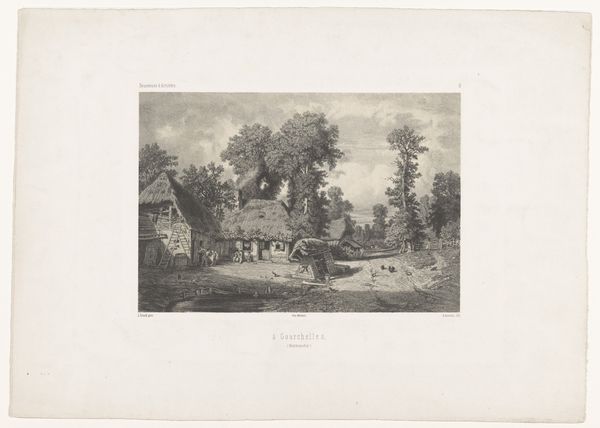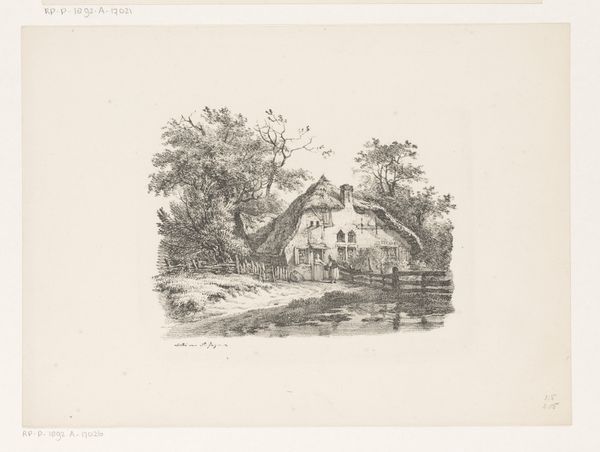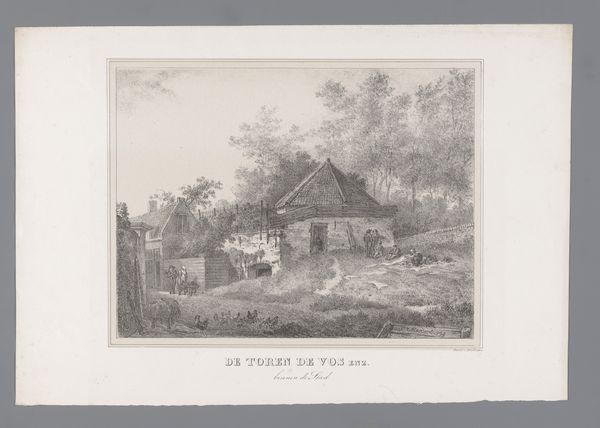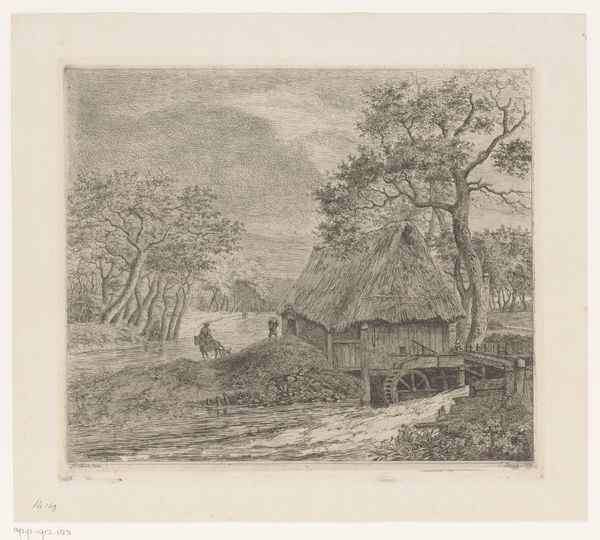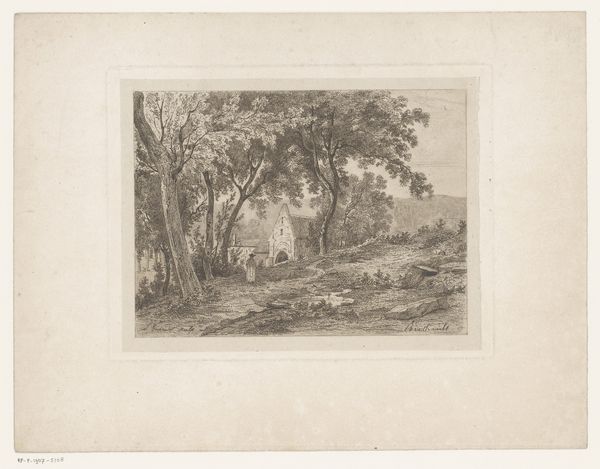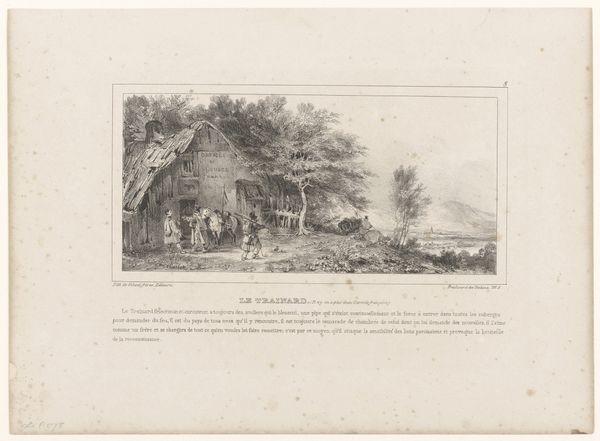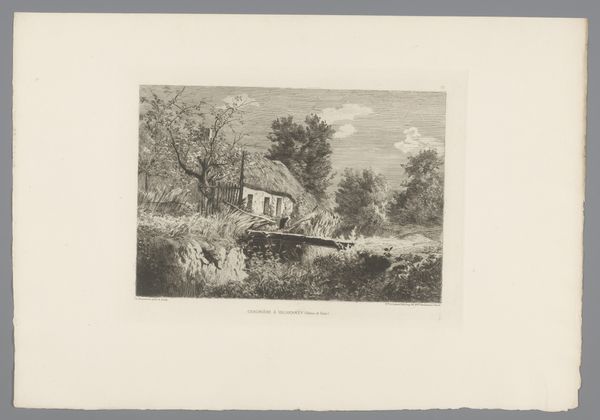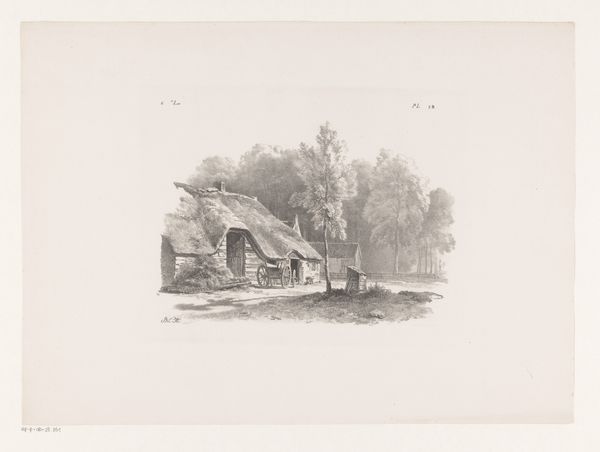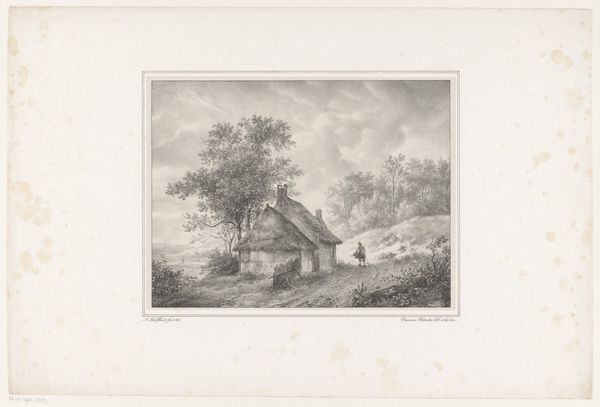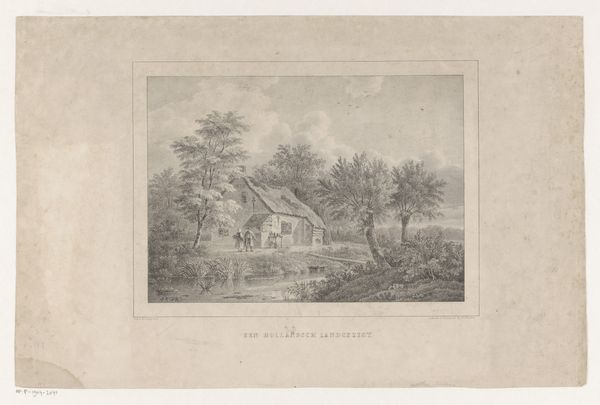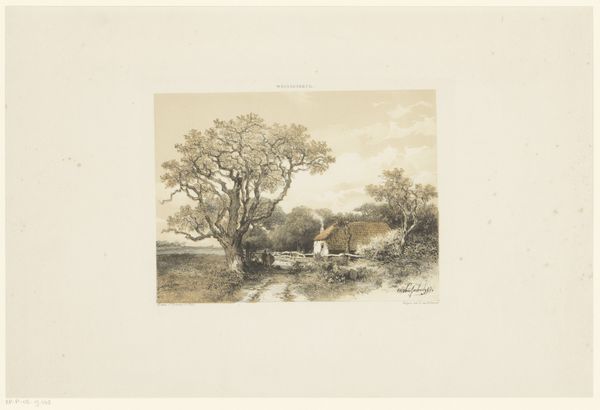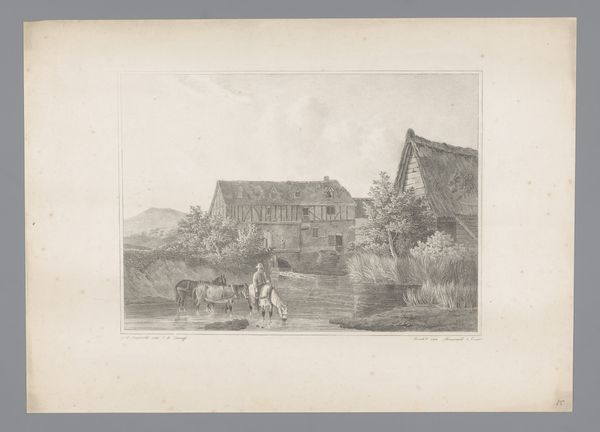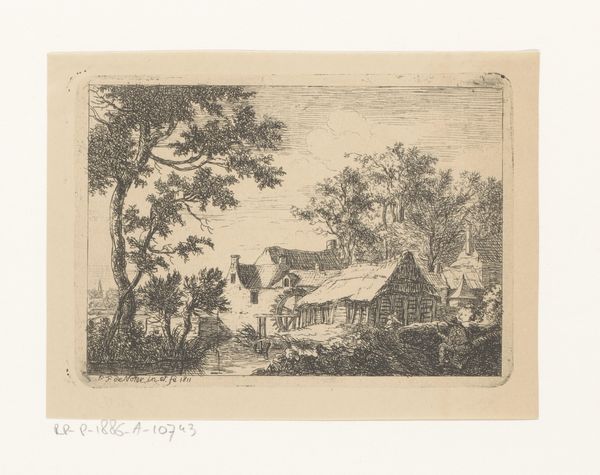
Gezicht op een woning in een heuvellandschap nabij Spa c. 1825 - 1827
0:00
0:00
engraving
#
landscape
#
romanticism
#
engraving
#
realism
Dimensions: height 265 mm, width 345 mm
Copyright: Rijks Museum: Open Domain
Théodore Fourmois created this print, "Gezicht op een woning in een heuvellandschap nabij Spa," using lithography. This process, developed in the late 18th century, involves drawing on a stone or metal plate with a greasy crayon, then using ink to transfer the image onto paper. The lithographic process allowed for relatively quick and inexpensive reproduction, making images like this accessible to a broad audience. Fourmois's choice of subject – a modest dwelling in the countryside – aligns with the growing interest in rural life and landscape during the 19th century. The print's texture and tonal range, achieved through careful manipulation of the lithographic crayon, evoke a sense of tranquility and closeness to nature. But it's important to remember that this image is also a product of its time, reflecting the changing social and economic landscape of Europe, and the rise of new forms of labor and leisure. By considering the materials and processes involved in its creation, we can gain a deeper appreciation for the complex layers of meaning embedded in this seemingly simple landscape.
Comments
No comments
Be the first to comment and join the conversation on the ultimate creative platform.
